It’s the time of year for saving money!
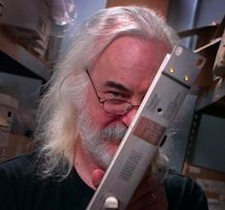 Nelson Pass is one
Nelson Pass is one
of the world’s most famous audio engineers (if any audio engineer can be called
famous compared to, say, Lady Gaga.) Known for his work on brands including
Adcom, Threshold, Pass Labs and his side project – First Watt, Pass has a
perspective on the specialty audio business that few others possess.
AudiophileReview.com wanted to know what Nelson was up to and what he thinks
about the latest trends in audio.
AR: What
constitutes “success” in audiophile equipment design?
NP: Being able to
create what you want (as a designer) and having happy customers.
AR: You’ve created
large high-power multi-stage balanced differential amplifiers and very simple
minimum parts-count minimalist single-ended amps. Most designers stick with one
concept and run with it for their entire career – how did you come to use such
a varied approach to your amp designs?
NP: You will see a
conceptual thread running through my amplifiers – good parts running heavy bias
currents with minimal (or no) feedback.
For the past 40 years the trend has been toward simpler circuits.
In 1975 the Threshold
800A was a five-stage amplifier sporting a triple series / triple parallel /
triple Darlington output stage and a dynamic bias circuit. By 1998 the Pass X1000 delivered a high
quality kilowatt with only two stages.
Currently I have a couple of amplifier projects with only one
transistor.
It’s
understandable why designers stick with “one trick.” The market is conservative, and success with
a particular approach creates economic pressure for more of the same. I deal with this by evolving Pass Labs
product gently, and by venting excess creativity into DIY projects and my “toy
company” First Watt.
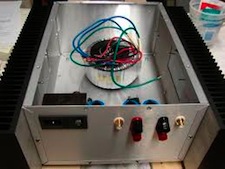 AR: In 2011, have
AR: In 2011, have
we reached a point where amplifiers won’t be getting much better or does
amplifier design have a long way to go towards perfection?
NP: There is
progress to be made, and the necessary tools are already on the table. From a strictly objective standpoint we are
largely finished – adding more zeros to the usual distortion numbers isn’t
going to improve the sound very much.
What remains is
the need for clearer insight into subjective effects. Our brains are very much different from test
equipment and are easily fooled by some phenomena and very sharp at
discriminating others. Reading the
literature in cognitive psychology, it’s clear that we don’t know very much
about musical perception.
As a practical
result we have to emphasize critical listening with potential designs. The necessary tools for this are experienced
ears and perseverance.
AR: Can amplifiers
have a “personality” outside of a particular system or does a system determine
an amplifier’s sound?
NP: Like people,
audio components either complement each other or not. Most of the customers we talk to are
concerned about choosing pieces that get along well together – for example they
often get a tube preamp to warm up the sound of their system.
The dance that
amplifiers and speakers perform is the most crucial factor. When people ask me what amplifier I
recommend, the first question I ask is “What speakers do you have?”
Anyone buying
high-end components should listen to them in their own system, in their own
environment and with their own time, otherwise it can be an expensive gamble.
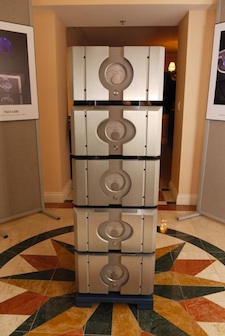 AR: What is your
AR: What is your
personal favorite amp that you’ve designed and why?
NP: There is a
best amp for a given customer and environment, but none that is best for
all. Setting aside the interactions
between components, there is a big difference in listener expectations between
live venues, car audio, home theater, and two channel.
I work with two-channel,
and there is more diversity relating to cost, types of music, customer taste
and so on. We make products that we
personally like, assuming that they will appeal to a reasonable percentage of
the customers out there.
(Of course the
real answer is: my favorite amplifier is the one I’m
working on at the moment.)
AR: Shifting to
preamps, do they require or need fundamentally different circuits and design
considerations than power amplifiers?
AR: Wayne Colburn
designs our preamplifiers. They are
different enough to require another designer, someone who thinks about preamps
and is not distracted by power amps.
At first blush a
preamp looks like a tiny power amp, but when you get into critical listening
with different designs it becomes apparent that they have their own sets of
issues. Line stages are difficult
enough, but phono stages are another beast altogether.
Of course the
development method is very similar.
Wayne designs a circuit using theory, intuition, and measurement and
then he listens to it. Then others
critically listen to it in different systems.
Then he plays with the design and repeats the process.
It takes a lot of
time and energy.
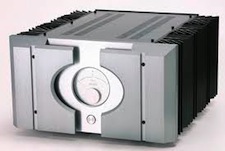 AR: What’s your
AR: What’s your
position on passive versus active preamps?
NP: You’d think
that a minimalist switch and variable resistor in a box would be as good or
better than active stages, but often it is not.
Some of the issues
are well understood; for instance if the resistance value of the potentiometer
is low, the source can have bass issues due to the output coupling capacitance
and higher distortion due to greater load current. At the other extreme, if the resistance is
too high it can create distortion and high frequency issues by presenting a
high source impedance to the power amp.
Then there are
things that don’t show up in the usual measurements and we simply observe that
the active circuit sounds better than the passive.
I file these under
“How About That”.
AR: What’s Your
Take On Digital Amps?
NP: They are
different. I make linear amplifiers with
an intrinsic character that depends minimally or not at all on negative
feedback.
Class D amplifiers
are switches with tons of feedback.
It’s amazing they
work as well as they do.
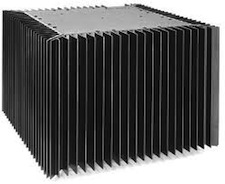 AR: Will You
AR: Will You
Recount The Story of How The Adcom GFA-555 Got its name
NP: I imagine that
Alec and Rob had a couple beers and asked, “What shall we call this Great
Fucking Amplifier?
AR: What’s next on
your plate for future projects?
NP: Wayne just
finished work on the XP30 line stage, which in addition to the plus-ultra
gain stage has a couple of features which I requested – two separately
adjustable sets of outputs for bi-amping and enough gain and voltage swing to
function as the front end for power output stages up to about 400 watts. I have a few prototype “unity gain” power
amplifiers that will mate well with this…
At the past two
CES we have shown the “concept amps” which will be our largest Class-A
offerings at 300 watts. They are also the largest and heaviest amplifiers we’ve
made. They will be available this fall
and represent some new tweaks we have in mind for future products.
First Watt has
some cool new toys – a special type of depletion-mode power Jfet known as a static
induction transistor (SIT), also called a VFet. Invented in Japan in the early ’70’s, these
were first made by Yamaha and Sony and enjoyed brief popularity in specialized
power amplifiers. Subsequent SIT devices
have been mostly seen in radar systems.
Where regular Fets
have a characteristic that mimics pentode tubes, the Vfet / SIT has a
triode-type curve that allows for very good performance without feedback or
degeneration. Unlike tubes, they operate
at voltages and currents appropriate to loudspeakers without output transformers
or cathode heaters. Last year I had a
special run of these rendered in Silicon Carbide (SiC) by SemiSouth, and have
spent this year evaluating circuits.
Lastly, this my
fortieth year doing audio projects for the DIY audio community which should see
the release of “The Beast With a Thousand Jfets”, “Burning Amp #3” and “BOB –
the Big Open Baffle Project”.
It’s a busy year.






Nelson is so smart and friendly I Just bought Ten Mono Audio Power Labs from Columbus. I never left tubes in this short life!